Welcome to your NCLEX reviewer and practice questions quiz about Emergency Nursing and Triage. Test your competence in emergency nursing in this nursing test bank.
Emergency Nursing & Triage NCLEX Practice Quiz
In this section are the practice problems and questions for emergency nursing and triage NCLEX practice quiz. In this nursing test bank, there are 40 practice questions divided into two parts. Please check out also our reviewer for emergency nursing below.
Quiz Guidelines
Before you start, here are some examination guidelines and reminders you must read:
- Practice Exams: Engage with our Practice Exams to hone your skills in a supportive, low-pressure environment. These exams provide immediate feedback and explanations, helping you grasp core concepts, identify improvement areas, and build confidence in your knowledge and abilities.
- Challenge Exams: Take our Challenge Exams to test your mastery and readiness under simulated exam conditions. These exams offer a rigorous question set to assess your understanding, prepare you for actual examinations, and benchmark your performance.
- You’re given 2 minutes per item.
- For Challenge Exams, click on the “Start Quiz” button to start the quiz.
- Complete the quiz: Ensure that you answer the entire quiz. Only after you’ve answered every item will the score and rationales be shown.
- Learn from the rationales: After each quiz, click on the “View Questions” button to understand the explanation for each answer.
- Free access: Guess what? Our test banks are 100% FREE. Skip the hassle – no sign-ups or registrations here. A sincere promise from Nurseslabs: we have not and won’t ever request your credit card details or personal info for our practice questions. We’re dedicated to keeping this service accessible and cost-free, especially for our amazing students and nurses. So, take the leap and elevate your career hassle-free!
- Share your thoughts: We’d love your feedback, scores, and questions! Please share them in the comments below.
Quizzes included in this guide are:
| Quiz No. | Quiz Title | Questions |
|---|---|---|
| Emergency Nursing Test Banks | ||
| 1 | Emergency Nursing & Triage NCLEX Challenge Exam | 20 |
| 2 | Emergency Nursing & Triage NCLEX Practice Exam | 20 |
Want a full copy? If you want to print a copy of this quiz, please visit FULL TEXT: Emergency Nursing & Triage NCLEX Practice Quiz (40 Questions)
Emergency Nursing Reviewer
“Emergency!” The very event that is linked to drama and hysteria. The word emerge in emergency, and an emergency suddenly emerges — it happens all of a sudden, at any time to anyone, and anywhere. The person, specifically the nurse who responds at the scene in the emergency department or on the medical-surgical unit, faces the ultimate challenge of their nursing skills. In this medical setting, you plan a solution for a short period of time, and there is no room for error.
Emergency
- Any trauma or sudden illness that requires immediate intervention to prevent imminent severe damage or death.
- Any condition that — in the opinion of the patient, his family, or whoever assumes the responsibility of bringing the patient to the hospital — requires immediate medical intervention. This condition continues until the determination has been made that the patient’s life or wellbeing is not threatened.
Emergency Nursing
- Emergency nursing is a nursing specialty that focuses on the care of patients who require prompt medical attention to avoid long-term disability or death. It involves the assessment, diagnosis, and treatment of perceived, actual or potential, sudden or urgent, physical or psychosocial problems that are primarily episodic or acute.
Emergency Medical Services
- Responsible for establishing, regulating, coordinating, and monitoring the components involved in the provision of emergency care.
- Team of healthcare providers that provides emergency care.
1. Emergency Medical Technician (EMT). Also known as an ambulance technician, is a health professional that provides emergency medical services. EMTs are most commonly found working in ambulances. They are also the most common type of providers in all of EMS.
2. Emergency Medical Technician Intermediates (EMTI). EMTIs are next to EMTs. Intermediates maintain a critical skill set that can often be life-saving to those involved in accidents, emergencies, and complicated procedures.
3. Emergency Medical Technician Paramedics (EMTP). EMTPs are the highest level of EMTs. Paramedics are advanced providers of emergency medical care and are highly educated in anatomy and physiology, cardiology, medications, and medical procedures.
Four Basic Steps for Emergencies
1. Know your facility. It is important to know what emergency resources are available in each location and the equipment’s placement, such as overhead sprinkler systems, fire extinguishers, and defibrillators. Healthcare providers, especially nurses, should know where the E-carts and E-kits are placed in the hospital setting. They need to be available to providers very easily.
2. Know the proper scope of your emergency care. The nurse should know their role, accountability, and responsibility when dealing with emergencies. The nurse is responsible for the following:
- Deciding when to call the doctor
- Coordinating care
- Assisting with other emergency procedures
- Performing emergency assessment and interventions
Primary and Secondary Assessment
- Primary Assessment. A primary assessment allows for the recognition of potentially life threatening conditions and the correct management to be implemented. The acronym ABCDE provides the basis of the primary assessment and it is an easy way to remember the correct order for assessing patients presenting to the emergency department.
- Airway. The most important component to be established and maintained to prevent hypoxia and ultimately death.
- Breathing. Assessed after the airway. During times of acute injury and stress, the respiratory system can be compromised.
- Circulation. Adequate circulation is needed to maintain tissue perfusion and cellular oxygenation. This system involves the heart, vessels, and blood volume.
- Disability. A neurological assessment to assess for motor or sensory deficits is vital as a decrease in level of consciousness can affect ABC.
- Exposure. Once the patient is exposed for full body assessment, their privacy needs to be respected by providing a gown and blanket.
- Secondary Assessment. When all life threatening conditions have been found and corrected, the secondary assessment is undertaken. The main focus of the secondary assessment is to explore specific medical conditions the patient may have. The components of the secondary are continuous with the primary assessment A,B,C,D,E,F,G,H,I.
- Full set of vital signs. Vital signs such as temperature, respiration rate, heart rate, blood pressure, and pain should be assessed.
- Give comfort. For many patients in the emergency department, levels of pain may be quite high.
- History. Understanding the complexity and processes involved in history taking allows nurses to gain a better understanding of patients’ problems.
- The mnemonic AMPLE is a useful tool to guide history taking.
- Allergies
- Medications
- Past medical history
- Last meal
- Events surrounding injury
- The mnemonic AMPLE is a useful tool to guide history taking.
- Inspect posterior surfaces.
3. Know your patients. Nurses are responsible for identifying if the patient is in an emergency and recognizing patients’ symptoms, taking measures within their scope of practice to administer medications, providing other measures for symptom alleviation, and collaborating with other professionals to optimize patients’ comfort and families’ understanding and adaptation.
4. Stay prepared. Preparing for unexpected occurrences is only part of the equation. Being fast, ready, and accurate for an emergency also involves practicing good mental health strategies that can develop one’s level of competency in the event of a crisis.
Emergency Equipment, Drugs, and Procedures.
- Ambu Bag. An Ambu bag is a medical tool used to force air into the lungs of patients who are not breathing or who are not breathing adequately so still need assistance. The term AMBU comes from the acronym for “artificial manual breathing unit.”
- Epinephrine. Epinephrine injection is used along with emergency medical treatment to treat life-threatening allergic reactions caused by insect bites or stings, foods, medications, latex, and other causes.
- Atropine Sulfate. Atropine is a prescription medicine used to treat the symptoms of low heart rate or bradycardia, reduce salivation and bronchial secretions before surgery or as an antidote for overdose of cholinergic drugs or mushroom poisoning.
- Heparin. Heparin is used to decrease the clotting ability of the blood and help prevent harmful clots from forming in blood vessels.
- Protamine Sulfate. When bleeding requires reversal of heparinization, protamine sulfate (1% solution) by slow infusion will neutralize heparin sodium. No more than 50 mg should be administered, very slowly in any 10 minute period. Each mg of protamine sulfate neutralizes approximately 100 USP heparin units.
- Tracheostomy Tray. Emergency tracheostomy is needed when breathing is obstructed and emergency personnel can’t put a breathing tube through your mouth and into your trachea.
- General instruments (tissue tweezers, mosquito forceps, Cooper scissors, muscle retractors, and Mayo needle holder).
- Scalpel
- 14-gauge sheath
- Dilator
- Guidewire dilating forceps
- Tracheostomy tube
- Endotracheal Tube. Endotracheal intubation is a medical procedure in which a tube is placed into the windpipe or trachea through the mouth or nose. In most emergency situations, it is placed through the mouth.
- CVP Kits. There are many different indications for placing a central venous line, but in emergency medicine, the most common indications include fluid resuscitation, drug infusions that could otherwise cause phlebitis or sclerosis, central venous pressure monitoring, emergency venous access, and transvenous pacing wire placement.
- IV Equipment. Intravenous access is used when therapies cannot be used or are less effective by alternative routes.
Guidelines for giving emergency care
1. Getting Started
A. Planning of action.
B. Gathering of materials needed.
2. Emergency Action Principles
A. Survey the scene. First, survey the scene for any possible hazards. Stop. Look. Listen. Feel. Safety first!
B. Perform Primary Assessment. If the area appears safe, check the victim for life-threatening conditions such as:
- Level of Consciousness
I. Assess for ABC.
- Airway. The most important component to be established and maintained to prevent hypoxia and ultimately death.
- Breathing. Assessed after the airway. During times of acute injury and stress, the respiratory system can be compromised.
- Circulation. Adequate circulation is needed to maintain tissue perfusion and cellular oxygenation. This system involves the heart, vessels, and blood volume.
- The central pulse of choice for adults is the carotid pulse. In children, the carotid pulse is usually used, although the femoral pulse is also an option. Infants (<1 year) have short necks and so the carotid is not palpated. Instead, the brachial or femoral pulses are used.
- Do not move to the next step if the client is unstable.
C. Call for help. After checking the victim, call for help. Remain calm, and be prepared to describe the situation and the exact location where responders are needed.
Also, contact local site security and emergency response.
D. Perform Secondary Assessment. The main focus of the secondary assessment is to explore specific medical conditions the patient may have.
I. Neurologic Assessment
- Level of Consciousness. The normal state of consciousness comprises either the state of wakefulness, awareness, or alertness in which most human beings function while not asleep or one of the recognized stages of normal sleep from which the person can be readily awakened.
- Alert. Mentally quick, active, and aware.
- Lethargic. Quality of dullness, prolonged sleepiness, sluggishness, and serious drowsiness.
- Stuporous. State of unresponsiveness and unaware of surroundings.
- Semi-Comatose. Stupored but can be aroused.
- Comatose
- Glasgow Coma Scale. The Glasgow Coma Scale (GCS) is a neurological scale which aims to give a reliable and objective way of recording the state of a person’s consciousness for initial as well as subsequent assessment.
Glasgow Coma Scale
| 1 | 2 | 3 | 4 | 5 | 6 | |
| Eye | Does not open eyes | Opens eyes in response to pain | Opens eyes in response to voice | Opens eyes spontaneously | N/A | N/A |
| Verbal | Makes no sounds | Makes sounds | Words | Confused, disoriented | Oriented, converses normally | N/A |
| Motor | Makes no movements | Extension to painful stimuli (decerebrate response) | Abnormal flexion to painful stimuli (decorticate response) | Flexion / Withdrawal to painful stimuli | Localizes to painful stimuli | Obeys commands |
- Interpretation:
- Severe, GCS < 8–9
- Moderate, GCS 8 or 9–12
- Minor, GCS ≥ 13.
- Eye response (E)
Four grades are starting with the most severe:
1. No opening of the eye
2. Eye opening in response to pain stimulus. A peripheral pain stimulus, such as squeezing the lunula area of the person’s fingernail, is more effective than a central stimulus, such as a trapezius squeeze, due to a grimacing effect.
3. Eye opening to speech. Not to be confused with the awakening of a sleeping person; such people receive a score of 4, not 3.
4. Eyes opening spontaneously
- Verbal response (V)
Five grades are starting with the most severe:
1. No verbal response
2. Incomprehensible sounds. Moaning but no words.
3. Inappropriate words. Random or exclamatory articulated speech, but no conversational exchange. Speaks words but no sentences.
4. Confused. The person responds to questions coherently, but there is some disorientation and confusion.
5. Oriented. The person responds coherently and appropriately to questions such as their name and age, where they are and why, the year, month, etc.
- Motor response (M)
There are six grades:
1. No motor response
2. Decerebrate posturing accentuated by pain (extensor response: adduction of the arm, internal rotation of the shoulder, pronation of forearm and extension at the elbow, flexion of wrist and fingers, leg extension, plantar flexion of the foot)
3. Decorticate posturing accentuated by pain (flexor response: internal rotation of the shoulder, flexion of forearm and wrist with a clenched fist, leg extension, plantar flexion of the foot)
4. Withdrawal from pain (absence of abnormal posturing; unable to lift hand past chin with supraorbital pain but does pull away when nail bed is pinched)
5. Localizes to pain (purposeful movements towards painful stimuli; e.g., brings a hand up beyond chin when supraorbital pressure applied)
6. Obeys commands (the person does simple things as asked)
- PERRLA. The list includes Pupils, Equal, Round, Reactive to, Light, Accomodation.
- Pupils. Pupils are the black hole in the middle of the colored part of your eye (the iris).
- Equal. Normal pupils are about the same size. But, for about one in five people, one is bigger than the other. This condition is called anisocoria and may be harmless.
- Round. Pupils should be perfectly round circles. Abnormal pupils may look like a keyhole or a cat’s eye.
- Reactive to. The muscles in the iris open and close the pupil in response to light. Normal pupils get smaller in brighter light and larger in the dark.
- Light. Normal pupils shrink in reaction to bright light. Both pupils should get smaller together, even when only shining direct light into one eye at a time. Both pupils should get bigger once it’s dark again.
- Accommodation. Pupils change size as they switch from looking at something far away to something very near.
- Motor movement and strength of muscles.
- AVPU. Alert, Verbal, Pain, Unresponsive
II. History
- Chief complaint.
- Duration of the problem.
- Mechanism of injury.
- Associated manifestations.
- Past medical history.
- Current treatment and compliance.
- Use of OTC drugs.
- Routine use of alcohol or drugs.
- Medication allergy.
- Immunization history.
- Pregnancy.
III. Pain Assessment. OPQRST is a useful mnemonic used by EMTs, paramedics, nurses, medical assistants, and other allied health professionals to learn about the patient’s pain complaint.
- Onset of the event. What the patient was doing when it started (active, inactive, stressed, etc.), whether the patient believes that activity prompted the pain and whether the onset was sudden, gradual or part of an ongoing chronic problem. “Did your pain start suddenly or gradually get worse and worse?”
- Provocation or palliation. Whether any movement, pressure such as palpation or other external factor makes the problem better or worse. This can also include whether the symptoms relieve with rest. “What makes your pain better or worse?”
- Quality of the pain. This is the patient’s description of the pain. Questions can be open ended (“Can you describe it for me?”) or leading. “What does your pain feel like?”
- Region and Radiation. Where the pain is on the body and whether it radiates (extends) or moves to any other area. “Point to where it hurts the most. Where does your pain go from there?”
- Severity. The pain score (usually on a scale of 0 to 10). Zero is no pain and ten is the worst possible pain. Remember, pain is subjective and relative to each individual patient.
- Timing. How long the condition has been going on and how it has changed since onset.
IV. General Appearance. Gait, unusual skin markings, affect, posture, skin color.
V. Head to toe Assessment. Establishing a good assessment would, later on, provide a more accurate diagnosis, planning, and better interventions and evaluation. That’s why it’s important to have a good and strong assessment.
VI. Diagnostic Tests. A diagnostic procedure is an examination to identify an individual’s specific areas of weakness and strength to determine a condition, disease, or illness.
E. Diagnosis. Nursing diagnoses represent the nurse’s clinical judgment about actual or potential health problems/life processes occurring with the individual, family, group, or community.
F. Management. The nurse implements the nursing care plan, performing the determined interventions that were selected to help meet the goals/outcomes that were established.
G. Evaluation. The nurse evaluates the progress toward the goals/outcomes identified in the previous phases. If progress towards the goal is slow, or if regression has occurred, the nurse must change the care plan accordingly.
H. Client Disposition. Understanding the patient’s readmission risk stratification, the needs of the patient upon discharge, and the ability of the receiving facility to meet those needs all have a role in the patient’s well-being and can help prevent readmission.
I. Documentation. The entire process is recorded or documented to inform all members of the health care team.
3. Golden Rules of Emergency Care
- Obtain consent whenever possible
- Be as calm and as direct as possible
- Care for the most serious injuries first
- Keep onlookers away from the injured person
- Handle victim to a minimum
- Loosen tight clothing
- Do not leave the victim alone
- Do not assume that the obvious injuries are the only ones
- Don’t give false reassurance
- Do not require the victim to make decision
Triage
Triage
- Trier in French, battlefield screening, to sort out, to categorize, to classify.
- The prioritization of patient care based on the severity of injury/illness, prognosis, and availability of resources.
Purpose:
- To sort or classify all patients
- Set priorities of care
Descriptions of a few Emergency Nurse roles:
Triage Nurse
- An emergency nurse is assigned to triage patients as they arrive in the emergency department, and as such, is the first professional patients will see.
- This emergency nurse must be skilled at rapid, accurate physical examination and early recognition of life-threatening conditions.
ED Charge Nurse
- An experienced emergency nurse is put in the role of charge nurse or team leader.
- This nurse is responsible for the overall flow of the department.
- He or she assigns nurses to patients, assures patients are being transported to and from tests outside the ED, addresses patient complaints and concerns, communicates with the house supervisor, takes phone calls, and assures nurses get their breaks.
Trauma Nurse
- Trauma Nurses work in Trauma Centers and run the show when trauma patients come in by ambulance, helicopter, or personal vehicle.
- This role requires specialized training and usually two years of experience.
Code Nurse
- Code Nurses run the Code Rooms where the sickest of the sick patients go in the ED. No pulse, not breathing? No problem! The Code Nurse will run the ACLS-based codes and provide emergency care for these critically ill patients.
Disaster Response or Emergency Preparedness Nurse
- In theory, all ED nurses are first-responders during a disaster.
- All ED nurses should have annual training in disaster response per the policy of their facility.
Critical-Care Transport (CCT) Nurse (Ambulance)
- CCT Nurses that work on ambulances are responsible for transporting critical care patients from one facility to another.
Burn Center Nurse
- Emergency Nurses that work in Burn Centers are specially trained in burn victim resuscitation and burn care. Most major metropolitan areas will have at least one designated burn center with an emergency department.
Emergency Department Triage System (Three-Tier System)
EMERGENT (RED)
- Priority 1
- Injuries are life threatening
- Needs immediate attention and continuous evaluation
- Severe head injury or comatose state
- Active seizures
- Sustain chemical splashes to the eye
- Severe respiratory distress or cardiac arrest
- Chest pain with acute dyspnea or cyanosis
- Trauma
- Severe chest or abdominal wound
- Limb amputation
- Severe shock
- Excessively high temperature (40.6 °C)
URGENT (YELLOW)
- Priority 2
- Injuries have complications that are not life threatening
- Needs to be treated within 1 to 2 hours (evaluation 30-60 minutes thereafter)
NONURGENT (GREEN)
- Priority 3
- Injuries do not have immediate complications
- Can wait for several hours for medical treatment (evaluation every 1-2 hours)
- Mild headache
- Cold symptoms
- Minor laceration
- Sprain
- Strains
NO CATEGORY or BLACK CATEGORY
- Includes dead or even catastrophically injured patients who have a minimal chance for survival despite optimal medical care.
Cardiopulmonary Resuscitation (CPR)
Cardiopulmonary Resuscitation (CPR) incorporates rescue breathing with chest compression to circulate oxygen around the body while anticipating further emergency help. CPR does not normally restart a person’s heart, but it can save many lives when combined with early emergency help, early defibrillation, and early advanced hospital care. Ribs may be broken during CPR, but this is preferable to dying.
Basic Life Support (BLS)
- Basic Life Support (BLS) is a specific level of prehospital, noninvasive emergency lifesaving medical care that attempts to give a person in cardiopulmonary arrest an open airway, adequate ventilation, and mechanical circulation (via chest compression) to the vital organs.
- BLS includes recognition of signs of sudden cardiac arrest (SCA), heart attack, stroke, and foreign-body airway obstruction (FBAO); cardiopulmonary resuscitation (CPR); and defibrillation with an automated external defibrillator (AED).
Elements of Basic Life Support (BLS)
- Maintain an open airway
- Support the breathing
- Support the circulation
Four Age Categories in Basic Life Support (BLS)
- Newborn. First hour after birth until discharge from the hospital
- Infant. Less than one year of age
- Child. One to eight years of age
- Adult. Age beyond that of a child
Procedures in Doing Cardiopulmonary Resuscitation (CPR)
https://www.redcross.org/take-a-class/cpr/performing-cpr/cpr-steps
Before Giving CPR
1. Check the scene and the person. Ensure the scene is safe, then tap the person on the shoulder and shout “Are you OK?” to ensure that the person needs help.
2. Call 911 for assistance. If it’s evident that the person needs help, call (or ask a bystander to call) 911, then send someone to get an AED. (If an AED is unavailable, or there is no bystander to access it, stay with the victim, call 911 and begin administering assistance.)
3. Open the airway. With the person lying on their back, tilt the head back slightly to lift the chin.
4. Check for breathing. Listen carefully, for no more than 10 seconds, for sounds of breathing. (Occasional gasping sounds do not equate to breathing.) If there is no breathing, begin CPR.
CPR Steps according to Red Cross
1. Push hard, push fast. Place your hands, one on top of the other, in the middle of the chest. Use your body weight to help you administer compressions at least 2 inches deep and delivered at a rate of at least 100 compressions per minute.
2. Deliver rescue breaths. With the person’s head tilted back slightly and the chin lifted, pinch the nose shut and place your mouth over the person’s mouth to make a complete seal. Blow into the person’s mouth to make the chest rise. Deliver two rescue breaths, then continue compressions.
Note: If the chest does not rise with the initial rescue breath, re-tilt the head before delivering the second breath. If the chest doesn’t rise with the second breath, the person may be choking. After each subsequent set of 30 chest compressions, and before attempting breaths, look for an object and, if seen, remove it.
3. Continue CPR steps. Keep performing chest compressions and breathing cycles g until the person exhibits signs of life, such as breathing, an AED becomes available, or EMS or a trained medical responder arrives on the scene.
Note: End the cycles if the scene becomes unsafe or you cannot perform CPR due to exhaustion.
Automated External Defibrillation (AED)
- Automated External Defibrillation (AED) is an equipment used to shock the heart with specialized electrical current in an attempt to stop the chaotic, disorganized contraction of the myocardial cells and allow them to start again in a synchronized fashion to restore a normal rhythmic heartbeat.
- Indicated for pulseless patients and mostly for patients with ventricular fibrillation
Two Types of Machine
1. Monophasic. Monophasic AEDs are devices that emit a type of shock. It sends an electrical current in a single direction from one side of the chest to an electrode on the other side.
2. Biphasic. Biphasic waveform defibrillators utilize bidirectional current flow as opposed to monophasic AED, where the current flows are in one direction.
While it’s important to know when to use a defibrillator, it’s just as important to know when not to use a defibrillator.
- Patients with traumatic cardiac arrest. They have a window of about 10 minutes to be resuscitated. With each minute that goes by, their odds of survival decline by about 10%.
- Children younger than one year of age
- Absence of hospital protocols in defibrillating patients between the ages 1 and 7 years old or those who weigh less than 55 lbs (25 kg).
Advanced Cardiac Life Support (ACLS)
- Advanced Cardiac Life Support (ACLS) involves lifesaving procedures, such as cardiac monitoring, administration of intravenous fluids and medications, and use of advanced airway adjuncts.
Criteria for Not Starting Cardiac Life Support
- The patient has a valid Do Not Attempt Resuscitation (DNAR) Order
- The patient has signs of irreversible death
- No physiologic benefit can be expected because viral functions have deteriorated despite maximal therapy
- Attempts to perform CPR would place the rescuer at risk of physical injury
- Newborn: If gestation, birth weight, or congenital anomalies are associated with almost certain early death.
Terminating BLS in Out-of-Hospital Setting
- Restoration of effective, spontaneous circulation and ventilation.
- Care is transferred to a more senior-level emergency medical professional who may determine that the patient is unresponsive to the resuscitation attempt.
- Presence of reliable criteria indicating irreversible death.
- The rescuer is unable to continue because of exhaustion, or the presence of dangerous environmental hazards, or because continuation or resuscitative efforts places other lives in jeopardy.
- A valid DNAR order is presented to rescuers.
- There is a high degree of certainty that the patient will not respond to further ACLS.
- Newborn: After 10 minutes without signs of life despite continuous and adequate resuscitation efforts.
Recommended Resources
Recommended books and resources for your NCLEX success:
Disclosure: Included below are affiliate links from Amazon at no additional cost from you. We may earn a small commission from your purchase. For more information, check out our privacy policy.
Saunders Comprehensive Review for the NCLEX-RN
Saunders Comprehensive Review for the NCLEX-RN Examination is often referred to as the best nursing exam review book ever. More than 5,700 practice questions are available in the text. Detailed test-taking strategies are provided for each question, with hints for analyzing and uncovering the correct answer option.
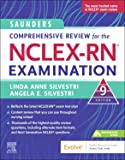
Strategies for Student Success on the Next Generation NCLEX® (NGN) Test Items
Next Generation NCLEX®-style practice questions of all types are illustrated through stand-alone case studies and unfolding case studies. NCSBN Clinical Judgment Measurement Model (NCJMM) is included throughout with case scenarios that integrate the six clinical judgment cognitive skills.
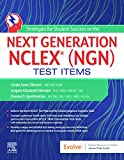
Saunders Q & A Review for the NCLEX-RN® Examination
This edition contains over 6,000 practice questions with each question containing a test-taking strategy and justifications for correct and incorrect answers to enhance review. Questions are organized according to the most recent NCLEX-RN test blueprint Client Needs and Integrated Processes. Questions are written at higher cognitive levels (applying, analyzing, synthesizing, evaluating, and creating) than those on the test itself.
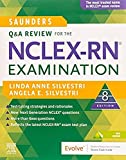
NCLEX-RN Prep Plus by Kaplan
The NCLEX-RN Prep Plus from Kaplan employs expert critical thinking techniques and targeted sample questions. This edition identifies seven types of NGN questions and explains in detail how to approach and answer each type. In addition, it provides 10 critical thinking pathways for analyzing exam questions.
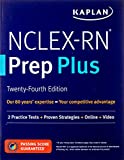
Illustrated Study Guide for the NCLEX-RN® Exam
The 10th edition of the Illustrated Study Guide for the NCLEX-RN Exam, 10th Edition. This study guide gives you a robust, visual, less-intimidating way to remember key facts. 2,500 review questions are now included on the Evolve companion website. 25 additional illustrations and mnemonics make the book more appealing than ever.
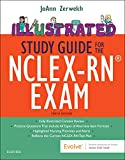
NCLEX RN Examination Prep Flashcards (2023 Edition)
NCLEX RN Exam Review FlashCards Study Guide with Practice Test Questions [Full-Color Cards] from Test Prep Books. These flashcards are ready for use, allowing you to begin studying immediately. Each flash card is color-coded for easy subject identification.
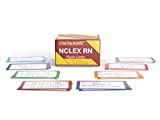
Recommended Links
An investment in knowledge pays the best interest. Keep up the pace and continue learning with these practice quizzes:
- Nursing Test Bank: Free Practice Questions UPDATED!
Our most comprehenisve and updated nursing test bank that includes over 3,500 practice questions covering a wide range of nursing topics that are absolutely free! - NCLEX Questions Nursing Test Bank and Review UPDATED!
Over 1,000+ comprehensive NCLEX practice questions covering different nursing topics. We’ve made a significant effort to provide you with the most challenging questions along with insightful rationales for each question to reinforce learning.
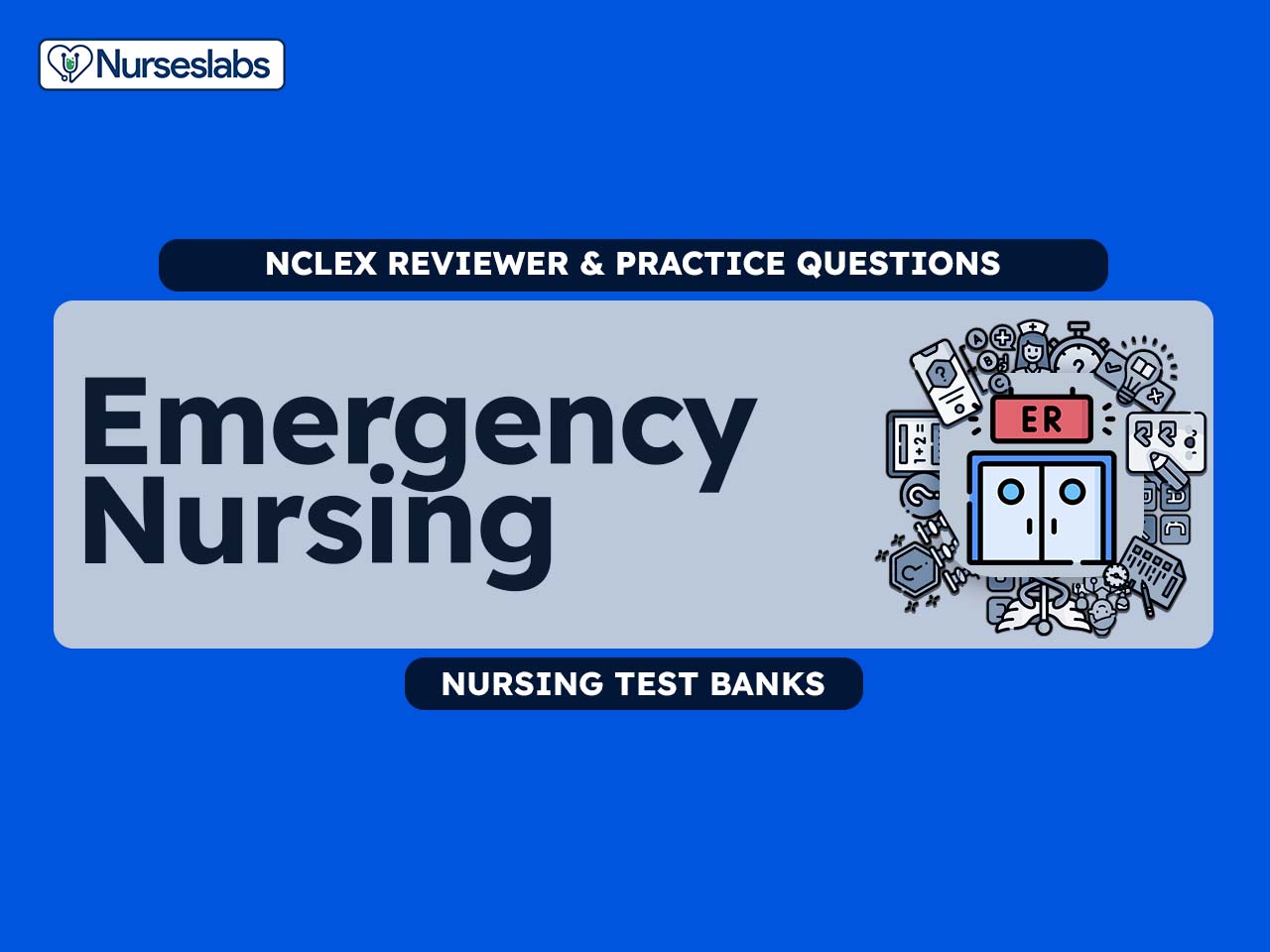

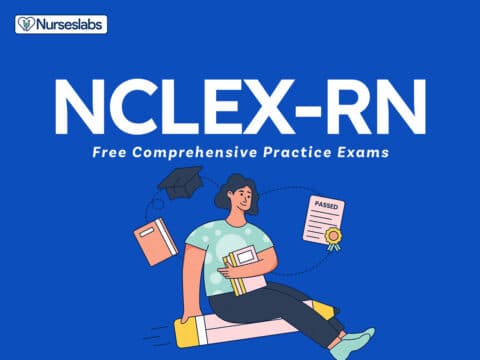
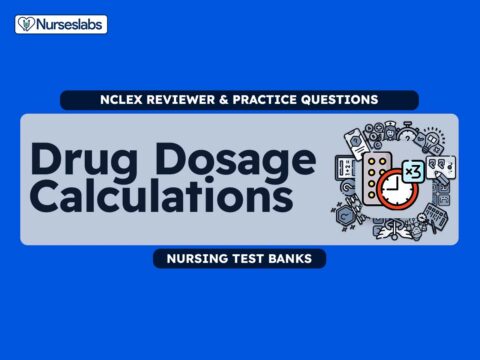

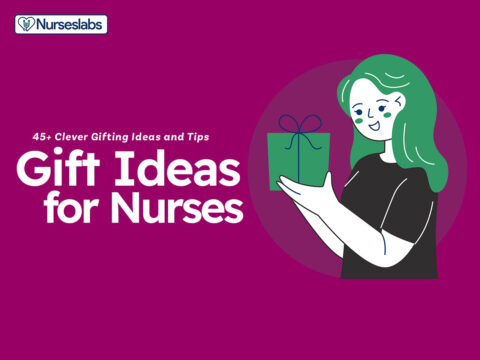

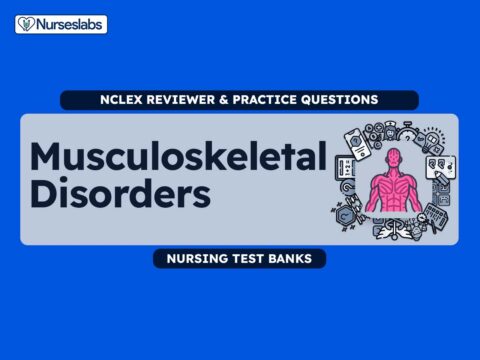
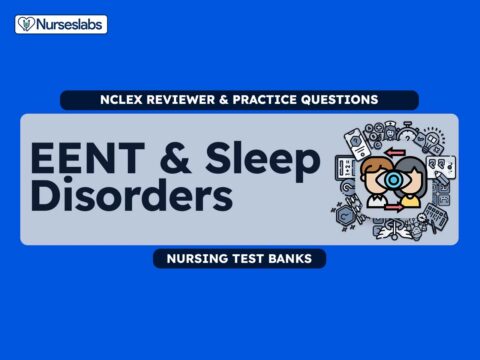

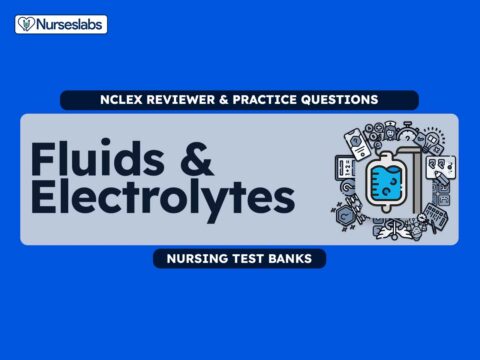
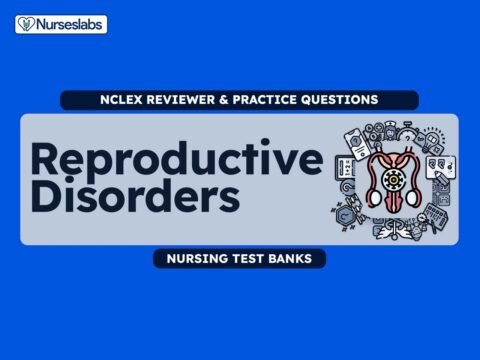
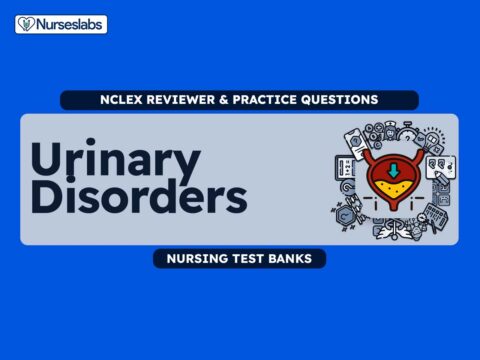
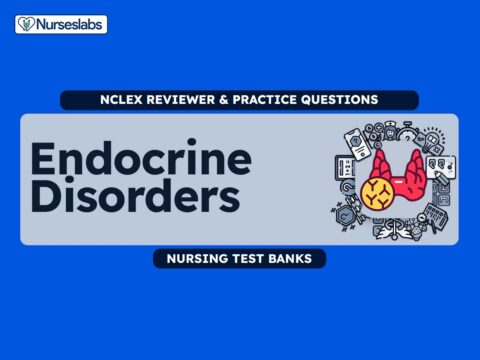
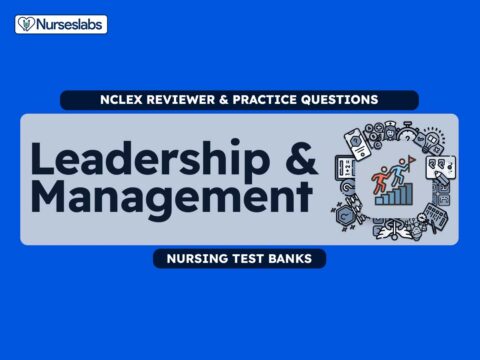

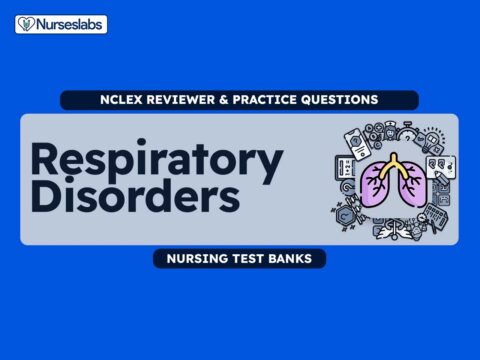

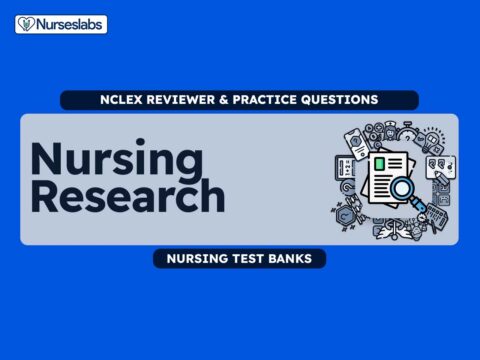


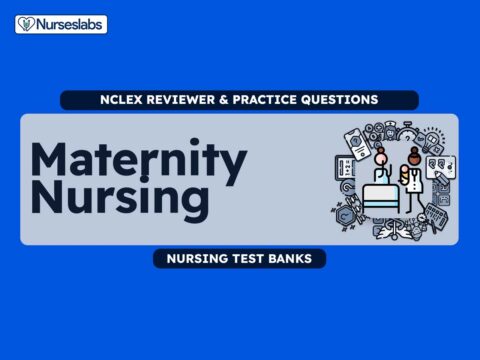

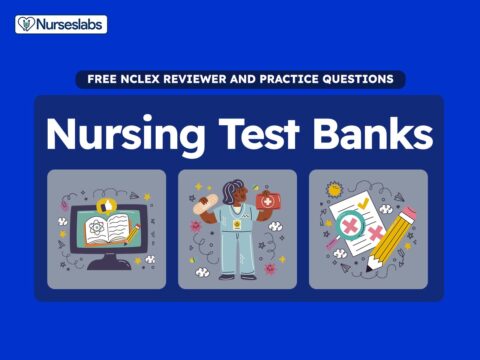

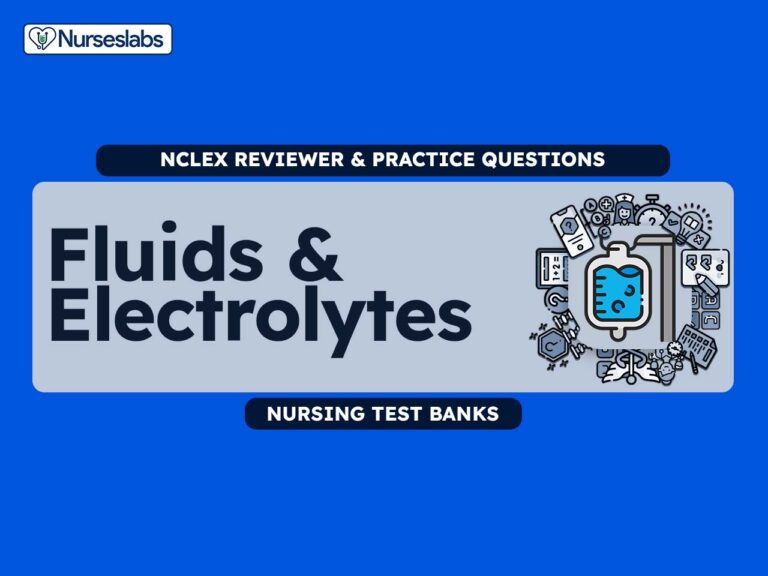


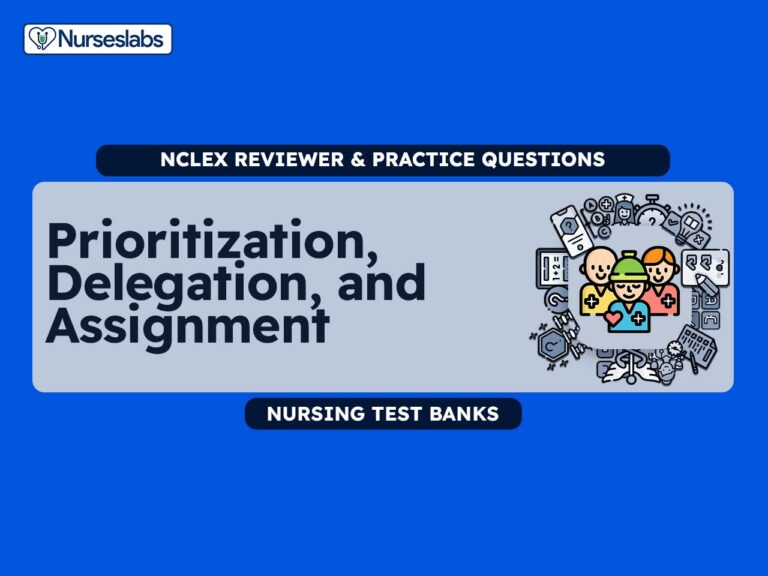

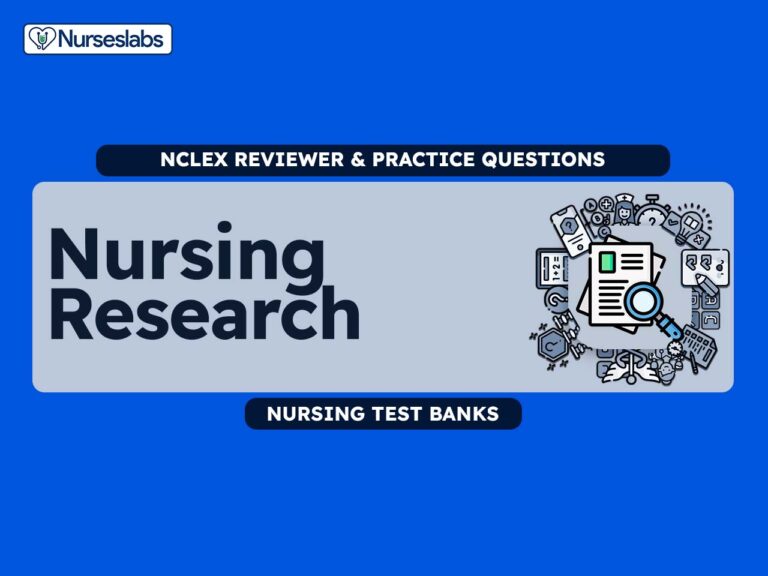

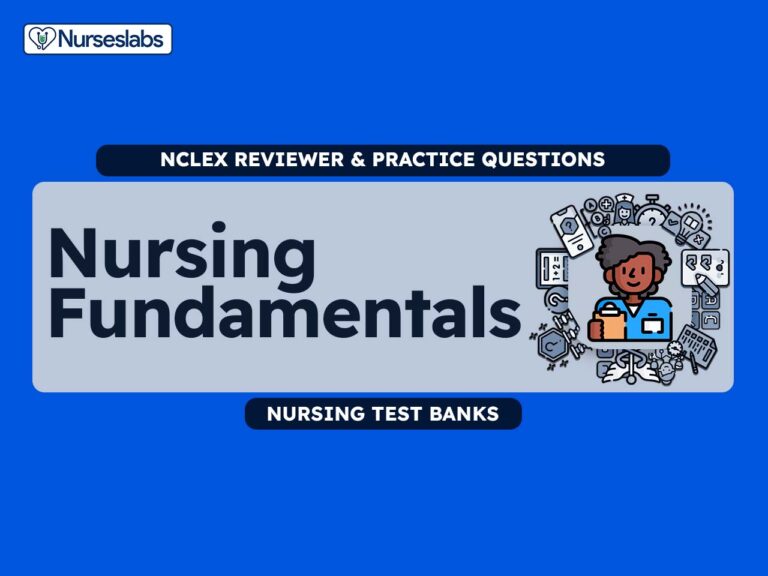
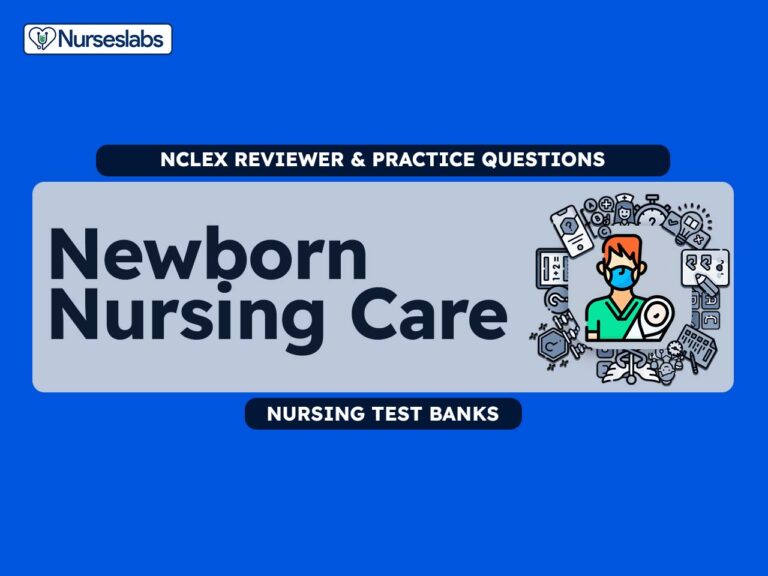
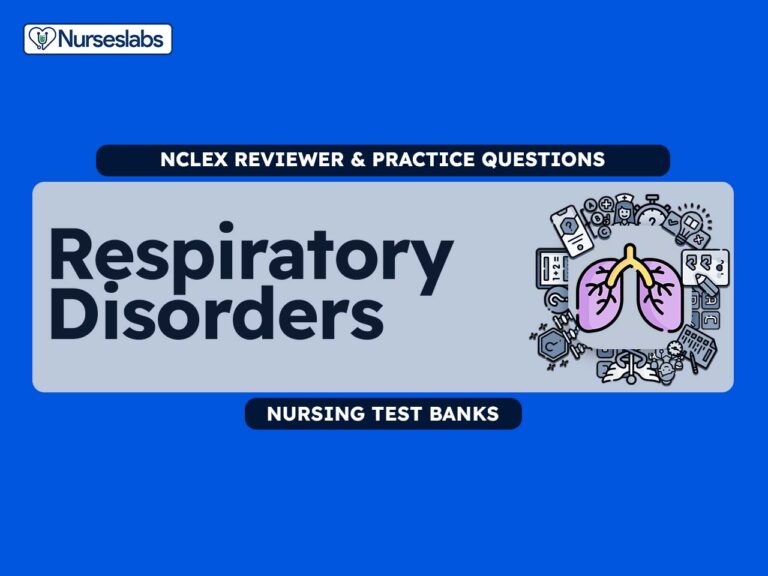
Leave a Comment